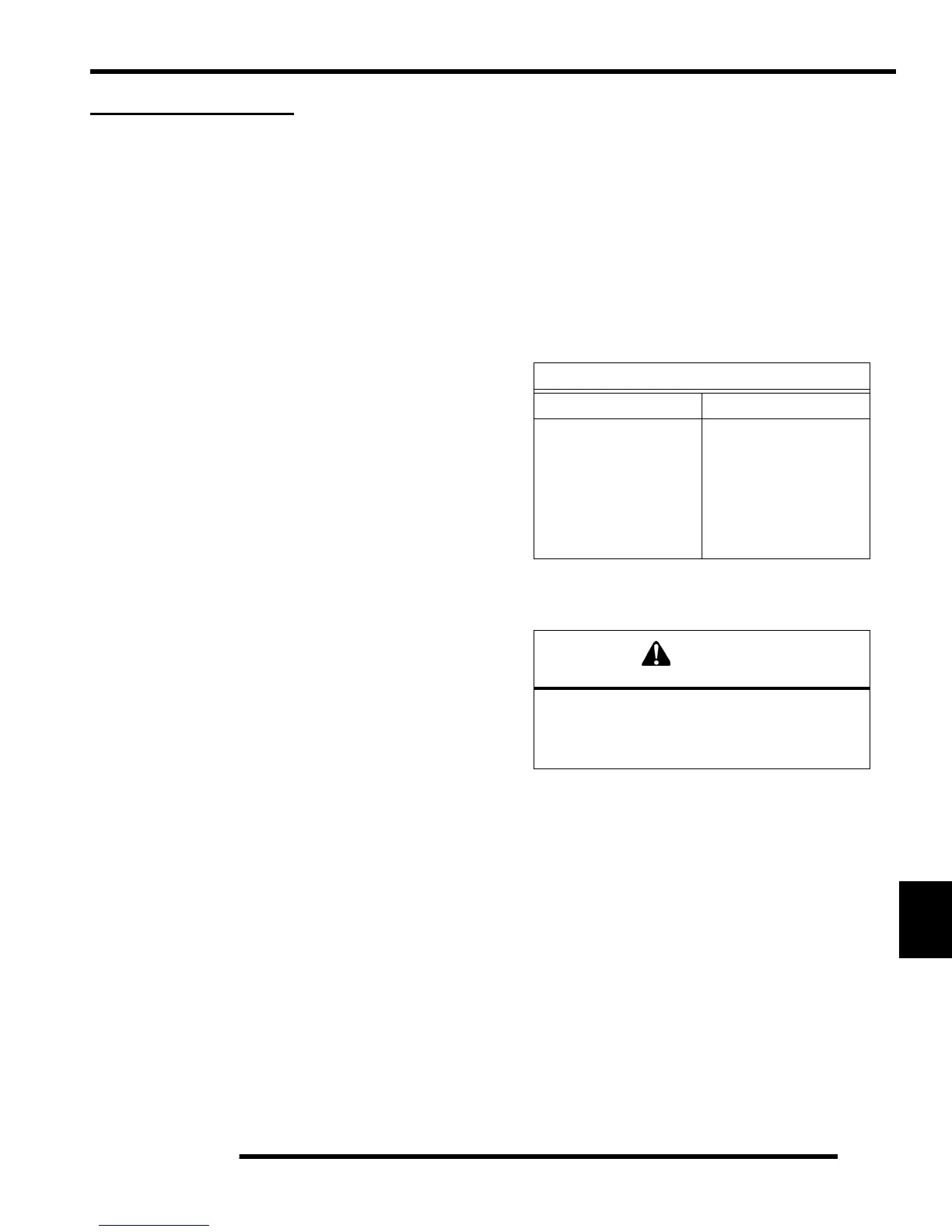10.27
ELECTRICAL
10
P
RELIMINARY
V
ERS
I
ON
BATTERY SERVICE
General Battery Information
The single most important thing to maintaining a sealed
“Maintenance Free” battery is don’t let it sit discharged: keep
it fully charged. A sealed “Maintenance Free” battery should
be kept to near fully charged for peak performance
Always verify battery voltage before charging, and 30 minutes
after charging.
A fully charged battery should read 12.8 V or higher after the
battery has been off the charger 1-2 hours.
NOTE: Batteries must be fully charged before use or
battery life will be reduced by 10-30% of full
potential. Charge battery for 3-5 hours at a current
equivalent to 1/10 of the battery's rated amp/hour
capacity. Do not use the vehicle’s stator/alternator to
charge a new battery.
IMPORTANT: NEVER attempt to add electrolyte or
distilled water to a Maintenance Free battery. Doing
so will damage the case and shorten the life of the
battery.
Battery Removal / Installation
See Chapter 2 “Maintenance” for battery service procedures.
Charging Procedure (Maintenance Free)
See Chapter 2 “Maintenance” for battery charging procedure.
Maintenance Free Battery Testing
Whenever a service complaint is related to either the starting or
charging systems, the battery should be checked first.
Following are two tests which can easily be made on a sealed
“Maintenance Free” battery to determine its condition: Open
Circuit Voltage Test and a Load Test.
OCV - Open Circuit Voltage Test
Battery voltage should be checked with a digital multimeter.
Readings of 12.8 volts or less require further battery testing and
charging. See the following chart and “Load Test”.
NOTE: Maintenance Free batteries should be kept at
or near a full charge. If the battery is stored or used
in a partially charged condition, hard crystal
sulfation will form on the plates, reducing the
efficiency and service life of the battery.
NOTE: Use a voltmeter or multimeter to test battery
voltage.
Load Test
A battery may indicate a full charge condition in the OCV test,
but still may not have the storage capacity necessary to properly
function in the electrical system. For this reason, a battery
capacity or load test should be conducted whenever poor battery
performance is encountered.
This is the best test of battery condition under starting load. Use
a load testing device that has an adjustable load. Apply a load
of three times the ampere-hour rating.
At 14 seconds into the test, check battery voltage. A good 12V
battery will have at least 10.5 Volts. If the reading is low, charge
the battery and retest.
Off Season Storage
See Chapter 2 “Maintenance” for battery service procedures.
OPEN CIRCUIT VOLTAGE
State of Charge Maintenance Free
100% 12.8 V - 13.0 V
75% Charged 12.5 V - 12.8 V
50% Charged 12.0 V - 12.5 V
25% Charged 11.5 V - 12.0 V
0% Charged 11.5 V or less
CAUTION
To prevent shock or component damage,
remove spark plug high tension leads and
connect securely to engine ground
before proceeding.

